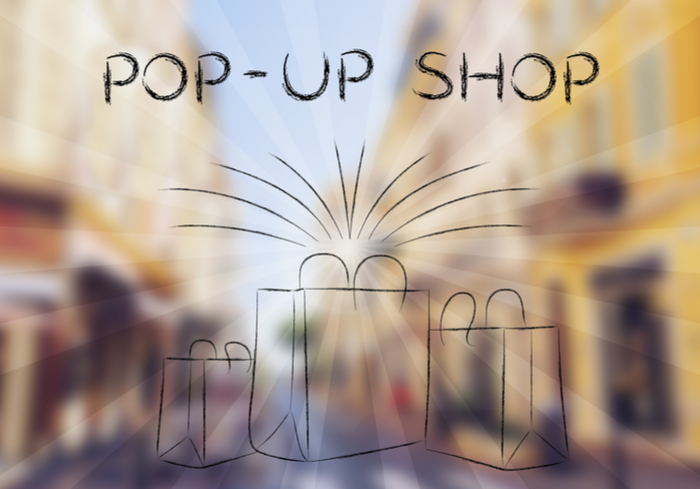The Year Of The Pop-Up Shop

Pop-up shops welcomed consumers in malls and major U.S. cities this year, with big brands testing retail concepts “in real life” with temporary spaces. And, in some cases, brick-and-mortar retailers brought these concepts to their sales floors with their own takes on pop-up shops.
Macy’s, for instance, kicked off the year in February with the rollout of its “The Market @ Macy’s” concept in cities such as New York and Las Vegas. With the retailer’s offering, brands were able to receive space on the first floor of a Macy’s store to sell or advertise their products in exchange for a one-time fee. In addition, Macy’s provided staffing to the brands as well as the flexibility to have stays as short as one month.
Marc Mastronardi, the retailer’s EVP of New Business Development and Innovation, told CNBC in February, “overwhelmingly, what we think makes this so attractive for Macy’s and our customers is it continues to drive customers to stores by giving a constant break of discovery. We have not [before] had a model in which we have provided [Macy’s retail service] to a really diverse set of categories coming into our space.”
Then, in the summer, Nordstrom teamed up with global sleep brand Casper to bring a pop-up store called Sleep-In@Nordstrom to some of its brick-and-mortar locations (and online). The concept featured items like Casper’s original mattress as well as the company’s Wave mattress, and, yes, even a dog bed made for man’s best friend. In addition, the concept was to be the launchpad for Casper Airy Linen Sheets, which was reported to be the company’s newest sleep offering at the time.
Big Brands Turn To Pop-Ups
In the fall, two big brands — Wayfair and Brandless — separately created their own pop-up shops to test out brick-and-mortar retail concepts. Wayfair, for instance, opened pop-up shops at the Westfield Garden State Plaza in New Jersey and the Natick Mall in Massachusetts. In an October announcement, the company said it would let customers peruse 100 swatches of fabric that could be used to make custom furniture along with a “How-To” section to help customers learn about home improvement projects.
Wayfair Chief Product and Marketing Officer Ed Macri said at the time that the retail spaces were another way that the retailer was connecting with customers: “We are bringing the Wayfair brand directly to shoppers in a completely new format this holiday season. Building on the success of our television advertising and direct mail, this pop-up experience is yet another way we are deepening engagement with customers beyond our online presence.”
And eCommerce retail startup Brandless opened a pop-up shop in New York City so shoppers could test out products on-site. The store was open in New York City’s Meatpacking District from a period spanning from October to November and featured items priced at $3 or less much like its website. The store, however, provided shoppers with unique offerings such as a “Best of Brandless” bundle that was specially designed for the location and the opportunity to test out new products in person.
Startups Adopt Pop-Up Model
In a pop-up-shop-like experience, Fourpost brought what it described as “studio shops and eateries” to the Mall of America and Canada’s West Edmonton Mall for the holiday season. With its offering, brands could lease space for six months to one year in a variety of designs, ranging from standard cubes to triangles. The spaces came with the kinds of elements like signage, lighting, point-of-sale (POS) hardware and Wi-Fi, as well as access to amenities like event space.
To start off its retail concept, the company planned to have 22 brands at the Mall of America and 16 brands at the West Edmonton Mall. And, while the spaces were to contain tenants offering a range of items from furniture to jewelry, there were some restrictions in place for the sake of variety: The spaces were to have only have three food and beverage companies, as Fourpost Founder and CEO Mark Ghermezian said in October that he didn’t want the spaces to serve as food halls.
In a press release in October, Ghermezian said the offering came as brands were seeking an alternative to traditional options for brick-and-mortar space. “The industry has not kept pace with modern retail,” he said. “We built Fourpost to completely re-architect the process by building a community and breathing fresh air into what has been a stale industry between landlords and brands for hundreds of years.”
The aim, then, is that pop-up shops don’t just help brands test out new concepts — they can change the way that retailers rent space heading into the future of retail, too.